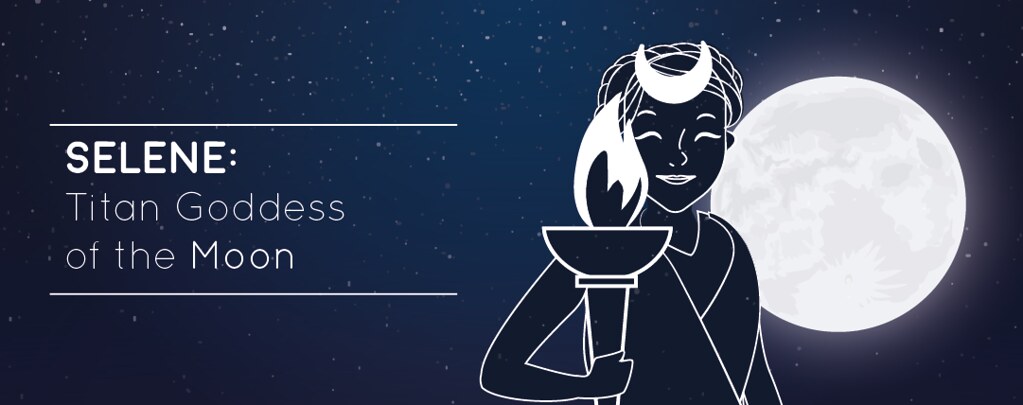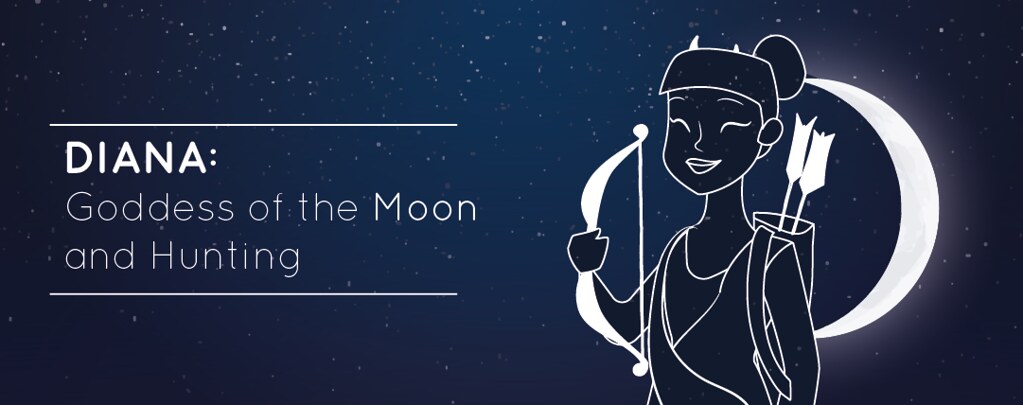Moon Deities and Their Myths
The night sky has been a rich source of our most engaging mythology, with constellations, comets and even meteor showers finding places in our folklore. However, nothing has held the minds, hearts and souls of the human race more than the moon. Many ancient religions have grand tales of the moon and even in today’s modern world, lunar myths are a frequent part of our culture. The following is a sampling of a few of the most colorful moon deities and their accompanying myths.
Selene: Titan Goddess of the Moon
In ancient Greek mythology, Selene, is the Titan goddess of the moon and is said to drive her glowing chariot powered by beautiful white horses across the sky each night. Her list of powers are unmatched, as far as lunar goddesses go. As the patron of femininity, she was known to have the power to ease childbirth, to inspire love, to mask reality, and to pierce illusion. Mythology also states that she has powers surrounding dreams and intuition, harnessing the ability to awaken intuition and to catalyze psychic visions. She was also said to have fallen in love with the handsome mortal Endymion and would watch him each night as he slept amidst his cattle. Eventually, they went on to have fifty children and Zeus made him her immortal companion.
Selene with her rose gold necklace, is known for her fierce draw towards creative expression, the yearn for sensual activity, and energy surrounding heightened emotions.
Artemis: Moon Goddess of the Hunt
 Artemis has been commonly associated with Selene. While these two goddesses were often thought to be one in the same, they are separate deities with unique meanings and powers. Artemis, a hunter, is the daughter of Zeus and twin sister of Apollo. She was the protector of animals, who would dwell in places of nature, harnessing that energy to rest and regain strength. Those loyal to this lunar goddess were known as Amazons which translates to “moon women” and they worshiped the new moon phase. The sixth day of the new moon in each monthly cycle belonged to Artemis.
Artemis has been commonly associated with Selene. While these two goddesses were often thought to be one in the same, they are separate deities with unique meanings and powers. Artemis, a hunter, is the daughter of Zeus and twin sister of Apollo. She was the protector of animals, who would dwell in places of nature, harnessing that energy to rest and regain strength. Those loyal to this lunar goddess were known as Amazons which translates to “moon women” and they worshiped the new moon phase. The sixth day of the new moon in each monthly cycle belonged to Artemis.
Like this goddess, the new moon symbolizes, of course, a new beginning. The moon phase perfectly aligns with Artemis, as it is a time for mental healing, as a new slate is presented with each new moon. This goddess signifies pure focus.
Diana: Goddess of the Moon and Hunting
Known throughout Roman mythology, Diana has long been associated with the words heavenly or divine. The goddess of the hunt, moon, and childbirth, Diana has been connected to wild animals and woodlands, and in some myths has the power to communicate with animals. Like Artemis, this is a goddess who reveled in and celebrated nature. Diana has been a symbol throughout Ancient Roman religion and is regarded as the virgin goddess of childbirth and women. Legend states that she swore never to marry, along with two other maiden goddesses, Minerva and Vesta, showcasing her individuality and her fierce independence.
Portrayed as youthful and gorgeous with stunning custom bracelets, Diana has been envisioned and depicted as wearing a tunic and hunting boots, holding a bow, and carrying a quiver on her shoulder, often accompanied by a deer or hunting dogs. Diana represents the crescent moon, which is a part of the first moon phase. Also known as a sickle moon, a crescent moon symbolizes fertility and is related to life and death. It is also a symbol of changing seasons, and it’s one that has appeared many times throughout history and holds significance in a wide range of religions.
Hecate: Goddess of the Crossroads
The goddess of the crossroads, as well as the goddess of the three paths, Hecate is the protector of everything newly born, and is the goddess of witchcraft. She is usually depicted as an old hag or a witch stirring the cauldron. A cousin to lunar goddess Artemis, she too was completely unwilling to sacrifice her independence for marriage. Hecate is associated with the dark phase of the moons often appearing barely visible and only spotted as a translucent or elusive light. She aptly represents the dark moon phase with her need for solitude and independence.
Lunar deities are a pillar of many cultures around the world, and these moonglow goddesses have been celebrated for hundreds of years. The symbolism associated with these goddesses is still held in reverence today. It can be seen in our stories, our fashion and our lifestyles. There are women and men’s necklaces that sport moon phases significant to them and it is a perfect gift to accompany a beautiful birthstone necklace or bracelet.
Maybe you can identify with one of these lunar goddesses yourself? Whichever spirit you are most in tune with, harness that power, channel your inner goddess, and focus your energy on capitalizing on the powerful force that is the moon throughout its varied and unique phases.


